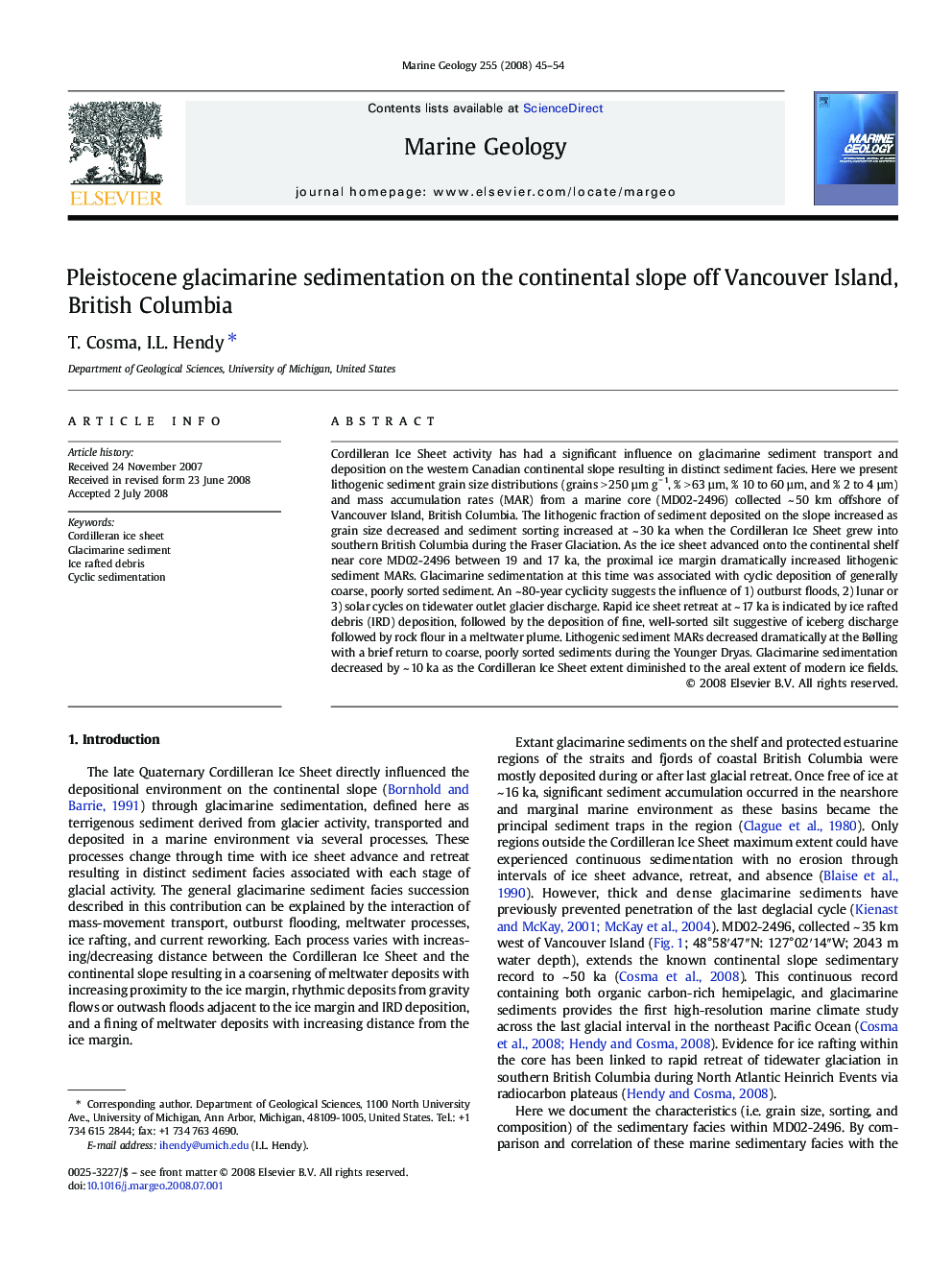| Article ID | Journal | Published Year | Pages | File Type |
|---|---|---|---|---|
| 4719161 | Marine Geology | 2008 | 10 Pages |
Cordilleran Ice Sheet activity has had a significant influence on glacimarine sediment transport and deposition on the western Canadian continental slope resulting in distinct sediment facies. Here we present lithogenic sediment grain size distributions (grains > 250 µm g− 1, % > 63 µm, % 10 to 60 µm, and % 2 to 4 µm) and mass accumulation rates (MAR) from a marine core (MD02-2496) collected ~ 50 km offshore of Vancouver Island, British Columbia. The lithogenic fraction of sediment deposited on the slope increased as grain size decreased and sediment sorting increased at ~ 30 ka when the Cordilleran Ice Sheet grew into southern British Columbia during the Fraser Glaciation. As the ice sheet advanced onto the continental shelf near core MD02-2496 between 19 and 17 ka, the proximal ice margin dramatically increased lithogenic sediment MARs. Glacimarine sedimentation at this time was associated with cyclic deposition of generally coarse, poorly sorted sediment. An ~ 80-year cyclicity suggests the influence of 1) outburst floods, 2) lunar or 3) solar cycles on tidewater outlet glacier discharge. Rapid ice sheet retreat at ~ 17 ka is indicated by ice rafted debris (IRD) deposition, followed by the deposition of fine, well-sorted silt suggestive of iceberg discharge followed by rock flour in a meltwater plume. Lithogenic sediment MARs decreased dramatically at the Bølling with a brief return to coarse, poorly sorted sediments during the Younger Dryas. Glacimarine sedimentation decreased by ~ 10 ka as the Cordilleran Ice Sheet extent diminished to the areal extent of modern ice fields.
